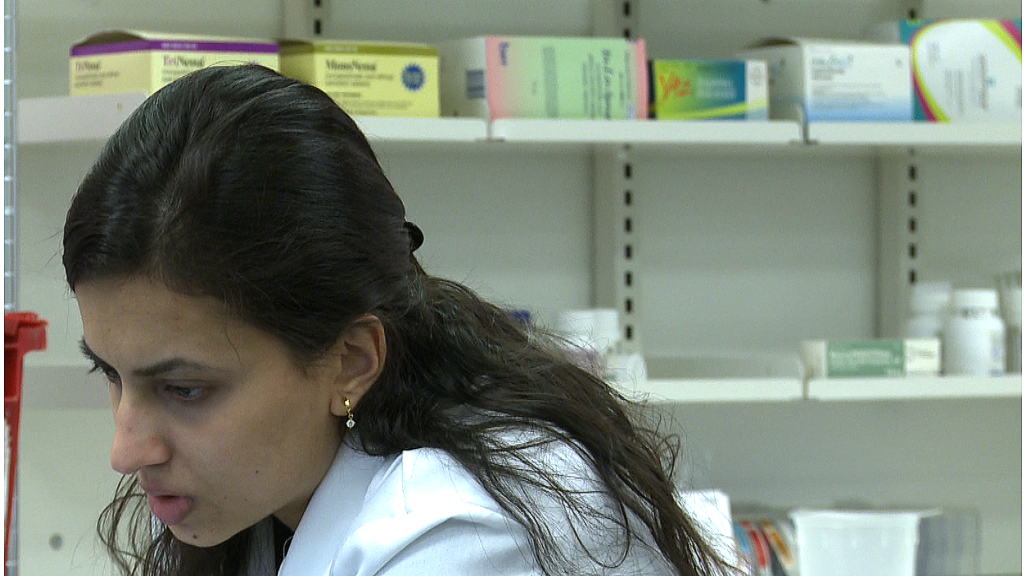
Doctors are still mostly men, and nurses are almost all women. But pharmacists are another story.
Pharmacists are a fast-growing profession offering a six-figure salary -- and the pay is nearly equal for men and women.
"The position of pharmacist is probably the most egalitarian of all U.S. professions today," Harvard economists Claudia Goldin and Lawrence Katz wrote in a paper on the subject they published in September.
Women make up slightly more than 50% of all full-time pharmacists, according to Census data collected in 2011. Once you factor in part-timers, they make up around 55% of the profession.
Full-time female pharmacists earned a median salary of $111,000 in 2011, about 92 cents to the dollar of their male counterparts.
Related: 6 jobs with most equal pay for men and women
Yes, there's a small pay gap there, but it can be almost entirely explained by some men working longer hours -- not discrimination.
"Women with children earn less largely because they work fewer hours," Goldin and Katz said in their paper.
Related: Men in female-dominated jobs
It wasn't always this way. Fifty years ago, women made up only about 8% of all pharmacists. What changed?
Your corner drugstore. The pharmacist profession was once dominated by men who owned small stores, but the rise of drug store chains Walgreens (WAG), CVS (CVS) and Rite Aid (RAD) greatly increased job opportunities for women in the field.
A pharmacist no longer had to juggle the responsibilities and long hours of owning a small business. Chain stores offered fewer barriers to entry and more flexible work schedules.
"In the 1950s and 1960s, before the real cultural revolution for women, independent pharmacy owners were a little reluctant to hire women," said Lucinda Maine, CEO of the American Association of Colleges of Pharmacy. "It was just purely, 'you're not big enough to lift these boxes' or 'we're worried about you closing a store at night.'"
Then came the chains ... with longer hours and bigger staffs.
"By the time we got to the 1980s, half of the graduating class was women, and the industry needed them," she said.
The field's professional associations also made an effort to reach out. The American Pharmacists' Association elected its first female president in 1979 and marketed the fact that a woman could have flexibility -- to work part-time, for example, if she wanted to raise a family.
"That was really the magnet," said Maine, who enrolled in pharmacy school at the time. "I can be a health professional. It's a reasonable length of study. The job itself is in a clean, professional environment, and I have some work-life flexibility."
Decades later, that work-life balance still attracts women to the job. Mandee Pierce, 30, is a Walgreens pharmacist in Manhattan. After taking off for a few months on maternity leave, she'll soon be heading back to work with a part-time schedule.
Related: Why secretary is still the top job for women
Pharmacy colleges, which used to require five years of study, reached an equal number of male and female grads around 1984. By comparison, nursing schools have always been dominated by women, and med schools didn't reach gender parity until 2008.
The pharmacy degree is now a six-year professional doctorate program that students can enter straight out of high school. The field's high pay is a selling point.
"For me personally, an important thing was a good return on investment," Pierce said. "In pharmacy you can count on making a good living."
Unlike other "feminized" professions, pharmacist wages have increased even as women entered the field. It avoided the "pink-collar" curse.
"Competition, and a shortage of pharmacists, came into play," Maine said.
She points to the early 2000s, when Walgreens alone was adding a new store nearly every 17 hours. The chain would sometimes hire nearly half of all new pharmacy grads nationwide, she said.
The boom is still going: The Labor Department expects the field to grow 25% between 2010 and 2020, adding about 225,000 jobs. Pharmacists are taking on more clinical roles, like administering immunizations, blood pressure screenings and medication management programs.
"Most people thought of pharmacists as the person behind the counter, counting pills from a big bottle to a small bottle," Maine said. "That never was a very accurate depiction, and is especially inaccurate now. All of our new grads are trained to offer many services."


